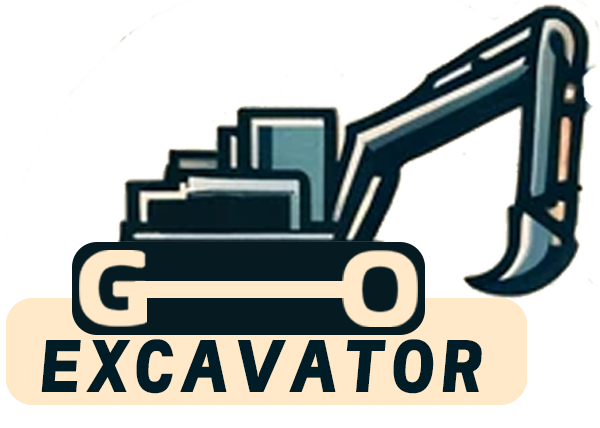
An excavator, a pivotal piece of equipment in construction, mining, and various other industries, represents a significant capital investment. This guide explores how to determine the time it takes for an excavator to earn back its purchase cost through operational income.
Introduction to Excavator Ownership
The Role of Excavators
Excavators are used for a variety of tasks including digging, material handling, demolition, mining, and grading. Their versatility makes them indispensable on many job sites.
Cost of Ownership
The cost of owning an excavator includes the initial purchase price, maintenance, operation costs, and potential financing costs. These factors all influence the payback period.

Breaking Down the Costs
Initial Purchase
- New vs. Used: New excavators can range from $100,000 to over $500,000, while used models might offer a cost-saving alternative.
- Size and Features: Larger or more specialized models come with higher price tags.
Operational Costs
- Fuel: Diesel is the most common fuel type for excavators, with fuel consumption depending on the machine’s size and usage intensity.
- Maintenance and Repairs: Regular maintenance is crucial and can prevent costly repairs. Budgeting 1-2% of the purchase price annually for maintenance is a prudent estimate.
Revenue Generation
- Billing Rates: The income an excavator can generate varies widely, typically ranging from $50 to $150 per hour based on the job type and regional market rates.
- Utilization Rates: The number of hours per day or month the excavator is actually working will significantly impact revenue.
Calculating the Payback Period
Step-by-Step Calculation
- Determine Annual Operating Cost: Include fuel, maintenance, insurance, and any financing costs.
- Estimate Annual Revenue: Multiply the hourly rate by the number of billable hours expected per year.
- Subtract Operating Costs from Revenue: This figure represents the net annual income from the excavator.
- Divide the Purchase Price by Annual Net Income: The result is the number of years required to pay back the initial investment.
Example Scenario
- Purchase Price: $200,000
- Annual Operating Cost: $20,000 (fuel, maintenance, insurance)
- Hourly Billing Rate: $100
- Daily Utilization: 4 hours
- Working Days per Year: 200
- Annual Revenue: $100 x 4 x 200 = $80,000
- Net Annual Income: $80,000 – $20,000 = $60,000
- Payback Period: $200,000 / $60,000 ≈ 3.33 years
Factors Influencing the Payback Period
Market Conditions
- Economic Climate: A booming construction market can shorten the payback period, while a recession might extend it.
- Regional Variations: Local demand for excavation work influences hourly rates and job availability.
Efficiency and Utilization
- Operational Efficiency: Well-trained operators and efficient job management can maximize hourly earnings.
- Maximizing Utilization: Seeking diverse opportunities for the excavator’s use, such as renting it out, can increase billable hours.
The payback period for an excavator depends on a combination of the initial cost, operational expenses, and revenue generation capacity. By understanding and optimizing these factors, owners can significantly influence how quickly their investment pays off. Careful management and strategic deployment of the excavator are key to maximizing return on investment.
A Comprehensive Guide to Buying a Excavator Second Hand
Purchasing a second-hand excavator can be a cost-effective solution for your construction or landscaping needs. However, buying used machinery comes with its own set of challenges and considerations. This comprehensive guide will walk you through [...]
Comprehensive Guide to Hyundai Mini Excavators: Features and Prices
Mini excavators have become indispensable tools in the construction and landscaping industries. Hyundai Construction Equipment, a global leader in heavy machinery, offers a range of mini excavators known for their reliability, efficiency, and advanced features. [...]
How to Extend the Service Life of Excavator Parts
Excavators are indispensable machines in the construction and mining industries. They perform heavy-duty tasks that demand robust components and meticulous maintenance. Extending the service life of excavator parts not only reduces operational costs but enhances [...]
Kymron Excavators: Innovative, Sustainable Construction Machinery
In the dynamic world of construction and heavy machinery, Kymron has emerged as a game-changer. Specializing in advanced excavator technology, Kymron is redefining industry standards with its commitment to innovation, efficiency, and sustainability. Company Overview [...]
Bulldozer vs. Wheeled Excavator: Which Machine is Better for Moving Soil?
Moving soil is a fundamental task in construction, landscaping, and earthmoving projects. Choosing the right machinery for the job can significantly impact efficiency, cost, and project timelines. Two of the most commonly used machines for [...]
Why Are Small Excavators Favored? A Comprehensive Guide
In the world of construction and landscaping, efficiency and versatility are key. Among the myriad of machinery available, small excavators have risen in popularity. But what makes them so favored? Introduction to Small Excavators Small [...]




